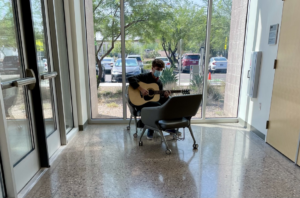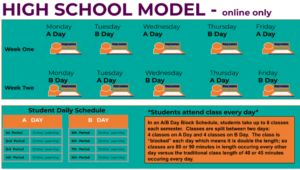On the Move to Online Learning

School closures mean learning at home or in the community for millions of American students. Hundreds of school districts were reasonably well prepared for the transition to online learning with a predominantly digital curriculum, a take-home device for every student, wi-fi provisions for families with limited access, and some history of working through snowy days with remote learning. Those success stories don’t make the news.
But even the best-prepared districts are scrambling to meet the needs of all learners. About 10,000 school districts (and growing as more states close) have some quick decisions to make about how to support learners in remote locations.
Safety, food security, and trusted relationships for the most vulnerable children are the first priority. There are no easy answers here but, with the safety of staff in mind, continuity of care is important. Remind families and guardians that what children need most need right now are safe spaces and trusted relationships.
Recognizing that every school district and student population is a little different, following are a few suggestions on how to develop next steps for supporting remote learners
Remote learning: mostly digital. If you have a widely used LMS and distributed 1:1 take-home devices and more than 80-85% of learners have good to adequate internet access at home, move to primarily online delivery and then identify, group, and support edge cases including:
- Lack of internet access at home: use a combination of check-out hot spots, community hot spots, and free or reduced-price wi-fi (e.g., Comcast reduced cost wi-fi).
- Special needs: Learners with identified challenges, accommodations, or disabilities may not be ready or able to fully utilize an online learning environment and will require in-person support or other partnership arrangements.
- Lack of a safe supervised day time learning location: provide appropriate supervised study space and/or identify community partners that can provide safe productive daytime spaces.
Expand your teacher support team (use some outside resources here if necessary) to provide coaching, lesson curation, online delivery, online student support. Support teacher leaders and celebrate successes.
If your school/district is 1:1 but you haven’t distributed devices, do it now. Set up a drive-by pick up and have learners and guardians sign an acceptable use policy.
Remote learning: digital and print. If less than 80% of your learners lack good wi-fi and there’s not a good, fast, reasonable way to fix that, gather or develop 60 days of printed resources to supplement what learners can do online.
Where school curriculum isn’t readily available online, encourage learners to access free online learning resources like Khan Academy. Many providers are also offering more open resources and tools like Curriculum Associates who launched an at-home offering that includes content and guidance for families, as well as increased flexibility with their i-Ready reading and math program to ensure more students can access and complete online instruction at home.
Remote learning: digital, print and project. Your state testing is probably canceled, so encourage teachers to get creative and use the opportunity to encourage authentic project-based learning. Teachers can suggest project templates with opportunities for learners to add voice and choice. Consider emphasizing hands-on learning opportunities that make use of household materials, encourage self-direction and can lead to deeper learning on topics of interest.
Remote learning: digital, print, project, and place. With learners in remote locations, encourage place-based experiences. Encourage learners, that can, go for a morning walk and record their observations. The same morning walk can be used on successive days to chart observations about local economics, ecology, art and architecture, and culture.
Remote learning–digital, print, project, place and partners. With a focus on keeping juniors and seniors on track for postsecondary transitions, encourage asynchronous (i.e., start anytime) college credit and microcredential online learning partners:
- edX MicroBachelors : At around $166 per credit, edX MicroBachelors programs are affordable ways to access college classes (school districts could pay for and support with success coaches). Learners can start with the content that matters most and learn at their own pace.
- AWS Educate offers free cloud computing courses and stackable badges. Google also offers cloud training and certification.
- Open P-TECH from IBM has mini-courses on data science, artificial intelligence, cybersecurity, and design thinking. Register and earn Industry-recognized digital badges.
Here’s the bottom line, do what you can to help families/guardians encourage children to do some reading, writing, and problem solving every day. Support as much hands-on, interest-based discovery and outdoor exploration as possible.
Embrace student initiative. Some teenagers will use this experience to help us invent the future of learning. Listen and learn with them. Highlight their leadership.
Be good to each other. It’s all about relationships.
For more, see:
Stay in-the-know with innovations in learning by signing up for the weekly Smart Update.








0 Comments
Leave a Comment
Your email address will not be published. All fields are required.